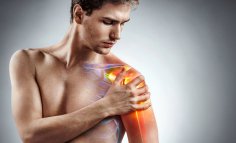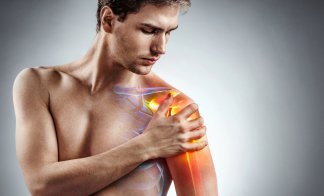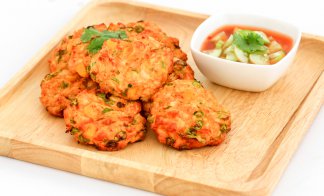Edelstein SL et al (1992) Increased meal frequency associated with decreased cholesterol concentrations: Rancho Bernardo, CA, 1984-1987.
Fabry P et al (1964) The frequency of meals. Its relation to overweight, hypercholesterolaemia and decreased glucose tolerance. Lancet. II: 614-615.
Farshchi HR et al (2005) Beneficial metabolic effects of regular meal frequency on dietary thermogenesis, insulin sensitivity and fasting lipid profiles in healthy obese women. Am J Clin Nutr. 81: 16-24.
Farshchi HR et al (2004a) Regular meal frequency creates more appropriate insulin sensitivity and lipid profiles compared with irregular meal frequency in healthy lean women. Eur J Clin Nutr. 58: 1071-1077.
Farshchi HR et al (2004b) Decreased thermic effect of food after an irregular compared with a regular meal pattern in healthy lean women. Inter J Obes. 28: 652-660.
Garrow JS et al (1981) The effect of meal frequency and protein concentrations on the composition of the weigth lost by obese subjects. Br J Nutr. 45: 5-15.
Gatenby SJ (1997) Eating frequency: methodological and dietary aspects. Br J Nutr. 77(Suppl 1): S7-S20.
Jenkins DJ (1997) Carbohydrate tolerance and food frequency. Br J Nutr. 77 (Suppl 1): S71-S81.
Jenkins DJ et al (1995) Effect of nibbling versus gorging on cardiovascular risk factors: uric acid and blood lipids. Metabolism. 44(4): 549-555.
Jenkins DJ et al (1989) Nibbling versus gorging: metabolic advantages of increased meal frequency. N Engl J Med. 321(14): 929-934.
Johnstone AM (2007) Fasting - the ultimate diet? Obesity reviews. 8: 211-222
Johnstone AM et al (2000) Altering the temporal distribution of energy intake with isoenergetically dense foods given as snacks does not affect total daily energy intake in normal-weight men. Br J Nutr. 83: 7-14.
Kerver JM et al (2006) Meal and snack patterns are associated with dietary intake of energy and nutrients in US adults. J Am Diet Assoc. 106: 46-53.
Kinabo JL & Durnin JV (1990) Effect of meal frequency on the thermic effect of food in women. Eur J Clin Nutr. 44(5): 389-395.
Kirk TR (2000) Role of dietary carbohydrate and frequent eating on body-weight control. Pro Nutr Soc. 59: 349-358.
LeBlanc J et al (1993) Components of postprandial thermogenesis in relation to meal frequency in humans. Can J Physiol Pharmacol. 71(12): 879-883.
Loius-Sylvestre J et al (2003) Highlighting the positive impact of increasing feeding frequency on metabolism and weight management. Forum Nutr. 56: 126-128.
Lundin EA et al (2004) Effects of meal frequency and high-fibre rye-bread diet on glucose and lipid metabolism and ileal excretion on energy on sterols in ileostomy subjects. Eur J Clin Nutr. 58: 1410-1419.
Mann J (1997) Meal frequency and plasma lipids and lipoproteins. Br J Nutr. 77(Suppl 1): S83-S90.
Mattson MP (2005) The need for controlled studies of the effects of meal frequency on health. Lancet. 365: 1978-1980.
McGrath SA & Gibney MJ (1994) The effects of altered frequency of eating on plasma lipids in free-living healthy males on normal self-selected diets. Eur J Clin Nutr. 48(6): 402-407.
Murphy MC et al (1996) Meal frequency: does it determine postprandial lipaemia? Eur J Clin Nutr. 50(8): 491-497.
Rashidi MR et al (2003) Effects of nibbling and gorging on lipid profiles, blood glucose and insulin levels in healthy subjects. Saudi Med J. 24(9): 945-948.
Speechly DP & Buffenstein R (1999) Greater appetite controll associated with an increased frequency of eating in lean males. Appetite. 33: 285-297.
Speechly DP et al (1999) Acute appetite reduction associated with an increased frequency of eating in obese males. Int J Obes. 23: 1151-1159.
Stote KS et al (2007) A controlled trial of reduced meal frequency withot caloric restrictions in healthy, normal weight, middel-aged adults. Am J Clin Nutr. 85:981-988.
Tai MM et al (1991) Meal size and frequency: effect on the thermic effect of food. Am J Clin Nutr. 54(5): 783-787.
Taylor MA & Garrow JS (2001) Compared with nibbling, neither gorging nor a morning fast affect short-term energy balance in obese patients in a chamber calorimeter. Int J Obes. 25: 519-528.
Verboeket-Van De Venne WP et al (1993) Effect of pattern of food intake on human energy metabolism. Br J Nutr. 70: 103-115.
Verboeket-Van De Venne WP & Westerterp KR (1993) Frequency of feeding, weight reduction and energy metabolism. Int J Obes Relat Metab Disord. 17(1): 31-36.
Westerterp-Plantenga MS et al (2002) Habitual meal frequency and energy intake regualtion in partially temporally isolated men. Inter J Obes. 26: 102-110.
Westerterp-Plantenga MS et al (1994) Food intake in the daily environment after energy-reduced lunch, related to habitual meal frequency. Appetite. 22: 173-182.
Whybrow S et al (2007) Effects of two weeks mandatory snack comsumption on energy intake and energy balance. Obesity. 15(3): 673-685.
Kommer snart...
01.01.19700
Kommer snart...
01.01.19700
Kommer snart...
01.01.19700
Kommer snart...
01.01.19700

















